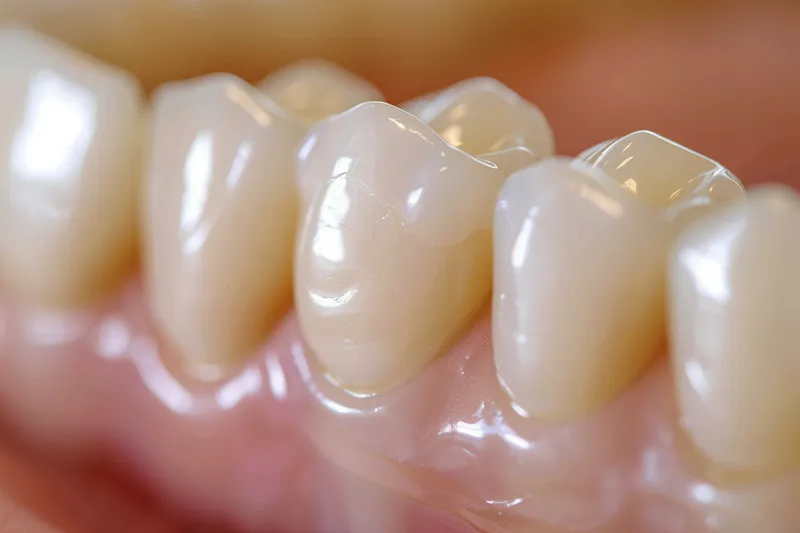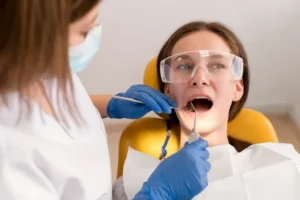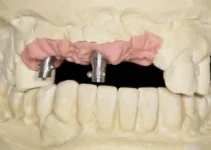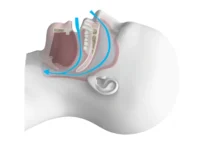Gum care is essential for maintaining overall oral health and preventing conditions such as gingivitis, a common form of gum disease that causes inflammation and bleeding. In this article, we explore effective strategies to prevent gingivitis including routine oral hygiene practices such as brushing twice a day with fluoride toothpaste, flossing daily, and regular dental check-ups. Additionally, we discuss professional treatments such as scaling and root planing that can help manage and treat gingivitis, restoring oral health and preventing further complications.
Understanding Gingivitis
What is Gingivitis?
Gingivitis is a common and mild form of periodontal disease that causes irritation, redness, and swelling (inflammation) of the gingiva or gums. It’s essential to recognize that gingivitis is often a precursor to more severe gum diseases. If left untreated, it can progress to periodontitis, which can lead to tooth loss and other serious oral health issues.
This condition affects a significant portion of the population. According to the Centers for Disease Control and Prevention (CDC), nearly half of all adults aged 30 and older show signs of gum disease. In its early stages, gingivitis is reversible with good oral hygiene practices and professional dental care.
Causes of Gingivitis
Gingivitis is primarily caused by plaque—a sticky, colorless film composed of bacteria that constantly forms on your teeth. When plaque is not removed through regular brushing and flossing, it can harden into tartar (calculus), which further irritates the gums. Some of the most common causes of gingivitis include:
- Poor oral hygiene habits
- Smoking or chewing tobacco
- Diabetes
- Hormonal changes, such as those during pregnancy or menopause
- Medications that reduce saliva flow
- Illnesses that affect the immune system
- Inadequate nutrition, especially a lack of vitamin C
Symptoms of Gingivitis
Recognizing the symptoms of gingivitis early can help you seek treatment before the condition worsens. Some of the most common signs and symptoms include:
- Red, swollen gums
- Gums that bleed easily during brushing or flossing
- Bad breath (halitosis)
- Receding gums
- Soft, tender gums
If you notice any of these symptoms, it’s crucial to visit your dentist promptly. Early intervention can help prevent the progression of gingivitis to more serious forms of periodontal disease. Regular dental check-ups and cleanings play a vital role in maintaining gum health.
For more comprehensive insights into maintaining oral health and preventing gum diseases, be sure to explore our other articles and resources. Staying informed is the first step towards a healthier smile.
Prevention Strategies for Gingivitis
Gingivitis, an inflammation of the gums, is a common and mild form of gum disease that can lead to more severe periodontal issues if left untreated. Fortunately, gingivitis is both preventable and treatable. The cornerstone of prevention lies in maintaining proper oral hygiene and seeking regular dental care. Below, we explore effective prevention strategies in detail.
Understanding the importance of these strategies can empower individuals to take charge of their oral health and significantly reduce their risk of developing gingivitis and other related complications.
Good Oral Hygiene Practices
Maintaining good oral hygiene is the most effective way to prevent gingivitis. Key practices include brushing your teeth at least twice a day using fluoride toothpaste and a soft-bristled toothbrush. Brushing helps remove food particles and plaque, the sticky film of bacteria that forms on teeth and gums. It’s crucial to use proper brushing techniques, such as holding the toothbrush at a 45-degree angle to the gums and using short, gentle strokes. Flossing daily is equally important. Flossing removes plaque and food particles from between the teeth and under the gumline, where a toothbrush can’t reach. For those who find traditional floss difficult to use, alternatives such as water flossers or interdental brushes can be effective. Consistency in these practices is key to preventing the buildup of plaque, which can harden into tartar and exacerbate gum inflammation.
Using an antiseptic mouthwash can further aid in reducing plaque and bacteria. Look for mouthwashes that contain chlorhexidine, cetylpyridinium chloride, or essential oils, as these ingredients have been shown to be effective in managing gingivitis. A balanced diet also plays a role in oral health—foods rich in vitamin C and calcium support healthy gums and teeth.
Regular Dental Visits
Even with the best at-home oral care practices, regular visits to the dentist are essential for preventing gingivitis. Professional cleanings remove tartar, which cannot be eliminated by brushing and flossing alone. Dentists and dental hygienists can also identify early signs of gingivitis and provide treatment before it progresses to more serious forms of periodontal disease. Most dental professionals recommend a visit every six months, although those with a history of gum disease may benefit from more frequent cleanings. During these visits, dentists will check for signs of inflammation, bleeding, and other issues that may not be apparent to the untrained eye.
Education is another critical aspect of regular dental visits. Dentists can provide personalized advice on improving oral hygiene techniques and recommend products that cater to your specific needs. They can also alert you to behaviors that might be harming your gum health, such as smoking or improper brushing techniques.
Incorporating these practices into your daily routine and maintaining regular dental visits can significantly reduce your risk of developing gingivitis. For more in-depth articles on oral health and advanced dental care techniques, be sure to explore our other articles.
Treatment Options for Gingivitis
Gingivitis, characterized by inflammation and bleeding of the gums, can progress to more severe forms of periodontal disease if left untreated. Fortunately, several effective treatment options are available to manage and reverse this condition. In this section, we will explore professional dental cleanings, medications and topical treatments, and home remedies as viable methods to combat gingivitis.
Early detection and prompt treatment can prevent the progression of gingivitis. Understanding the various treatment options can help individuals make informed decisions about their oral health. Below, we discuss the different approaches to managing this common dental issue.
Professional Dental Cleanings
One of the most effective ways to treat gingivitis is through professional dental cleanings. Dental hygienists or dentists use specialized tools to remove plaque and tartar that have built up on the teeth and below the gumline. This process, known as scaling and root planing, helps eliminate the bacteria causing the inflammation.
During a professional cleaning, the dentist may also perform oral irrigation with an antiseptic solution to further reduce bacterial activity. Regular dental check-ups and cleanings are crucial in maintaining oral health and preventing gingivitis from returning.
Medications and Topical Treatments
In some cases, dentists may prescribe medications to manage gingivitis. These could include antimicrobial mouth rinses, antiseptic chips or gels that are placed into the gum pockets, or oral antibiotics to control infection. These treatments aim to reduce bacterial load and inflammation in the gums.
Topical treatments, such as prescription-strength mouthwashes containing chlorhexidine, can also be effective. These mouthwashes help kill bacteria and improve gum health. It’s important to use these medications as directed by a dental professional to achieve the best results.
For more severe cases of gingivitis, dentists might combine medications with other treatments, such as scaling and root planing, to enhance the overall effectiveness and ensure comprehensive management of the condition.
Home Remedies
While professional treatments are essential, home remedies can also play a significant role in managing and preventing gingivitis. Good oral hygiene practices, such as brushing twice a day with fluoride toothpaste and flossing daily, are fundamental in keeping plaque at bay.
Additionally, rinsing with salt water can reduce gum inflammation and promote healing. Some people find that using a soft-bristled toothbrush and avoiding tobacco products can significantly improve their gum health.
Other home remedies include using natural antibacterial agents like tea tree oil or coconut oil for oil pulling. These methods can help reduce bacteria and improve oral hygiene, although they should be used in conjunction with, not in place of, professional dental care.
Understanding the various treatment options available for gingivitis can empower individuals to take control of their oral health. Explore more of our articles to learn about advanced treatments and preventive measures for maintaining a healthy smile.
Effective Strategies for Managing Gingivitis
Understanding how to prevent and treat gingivitis is crucial for maintaining healthy gums. Here, we delve into one of the most common questions about gum care.
What are the best practices for preventing gingivitis?
To prevent gingivitis, it is essential to maintain good oral hygiene. This includes brushing your teeth at least twice a day, using fluoride toothpaste, and flossing daily. Regular dental check-ups and cleanings are also crucial. Additionally, using an antiseptic mouthwash can help reduce the bacteria that cause gingivitis. Avoiding tobacco products and managing conditions like diabetes can further protect your gums from inflammation.

My name is Salman Kapa, a 73-year-old expert in bone regeneration and dental implantology. With decades of experience in the field, I am dedicated to advancing our understanding of oral health and hygiene. Through my research and writing, I aim to contribute to the development of innovative solutions in dental care.




